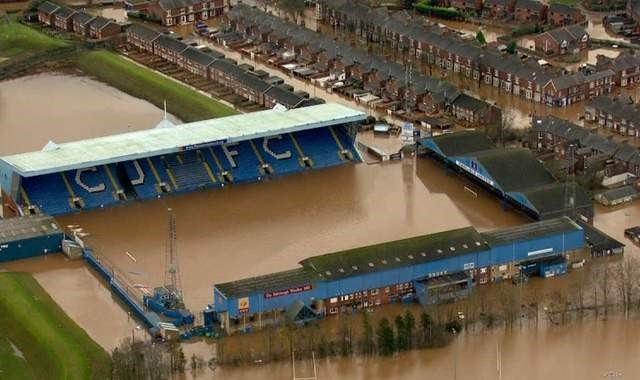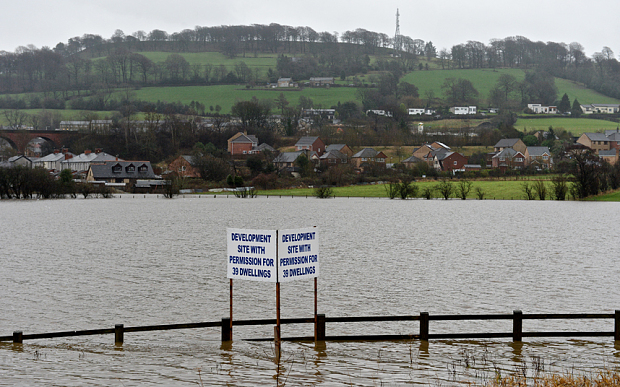When do I need an FRA?
At the end of 2015 we all watched in horror as over 5,000 homes and businesses in Cumbria were flooded. For some it was a new lesson: even if our homes lie behind flood defences, we are not necessarily safe. These latest floods have underlined the importance of conducting a robust risk assessment when planning a new development or buying a new property.

Flood Risk Assessments for planning:
The Environment Agency (EA) has a planning flood map identifying areas at risk of flooding: Flood Zone 1 (low probability), Flood Zone 2 (medium probability) and Flood Zone 3 (high probability). If your planned development lies in one of these areas you might be required by law to carry out a Flood Risk Assessment. According to government planning policy, you must have a flood risk assessment if the proposed development if it:
- includes building or engineering works in Flood Zone 2 or 3;
- includes building or engineering works on land classified by the EA or Local Authority as having critical drainage problem;
- changes the use of land or buildings in a place at risk of flooding from rivers or the sea, or with critical drainage problems;
- changes the use of land or buildings in a way that increases flood vulnerability of the development where it may be subject to other sources of flooding;
- is larger than 1 hectare.

You can also check you property’s risk of different types of flooding on the EA’s website. They have maps for flooding from rivers and sea, reservoirs and surface water.
Flood Risk Assessments for private individuals and businesses:
When our homes or businesses are hit by floods the consequences can be unexpected and far-reaching. Families can be displaced for weeks or months, stock is destroyed, and customers go elsewhere. What’s more, your insurance premium can skyrocket. Taking flooding into account when buying any new property or land is vital.
A “HomeBuyers Report” or your conveyancer might identify flooding as a potential issue. HomeBuyers’ Reports are often automated and fail to include site-specific data or consultant analysis. Unda has a range of services for homebuyers, sellers and conveyancers that can help reassure a potential buyer or enable them to analyse the risk of flooding and make an informed decision about whether to buy an at-risk property. Businesses large and small may need an assessment of the risk of flooding at single sites or across a portfolio or sites. Unda can supply bespoke Flood Risk Assessments to satisfy these needs.
Insurance companies may also require site-specific Flood Risk Assessment before quoting – or may simply overestimate your risk, leading to higher premiums. A flood risk assessment could help you save on premiums
At what stage of a development should the assessment be done?
We recently worked with a local developer who had purchased a potential residential development site which he intended to build 2 new single storey bungalows. The site already had a dilapidated single storey bungalow which he obtained permission to demolish in order to get the construction program moving. He didn’t anticipate any issues with obtaining permission as the surrounding properties consisted of single storey bungalows.
Unbeknown to the developer the site was located within a high risk tidal flood zone (Flood Zone 3). In hast, the developer demolish the dilapidated bungalow on the site before obtaining full planning permission for the 2 new single storey bungalows from the Local Planning Authority.
Unda had been approached by the developers’ architect post-demolition of the property, whereupon the architect presented the plans for proposed 2 new single storey bungalows. The Local Planning Authority had already rejected this proposal, due to other planning restrictions (not flood related).
As the existing dilapidated bungalow had already been demolished, the Environment Agency (who are a statutory consultee in the planning process in this instance) objected to the application, and the Local Planning Authority refused to grant permission for the property to be rebuilt due to the inherently high risk of tidal flooding on the site. The developer is now faced with a lengthy and costly appeal process and a significantly devalued site.
If the developer had understood the level of flood risk posed, and its implications prior to purchasing the site or embarking on his construction program, he would have been better placed to mitigate the risks and potentially turn a profit on the site. Had a Flood Risk Consultant had been involved in the project at the pre-acquisition stage, the developer would have also greatly reduced the amount he had spent on his application.
While this is a worst case scenario, it’s far from uncommon for a developer or investor to purchase a site whilst being unaware of potential planning restrictions due to flood risk. We would always recommend that an investigation of flood risk is carried out if you intend to redevelop the site. If flood risk is flagged as a potential issue, Unda are able to offer fast, full and comprehensive feasibility studies to detail the potential implications and restrictions for the intended development.